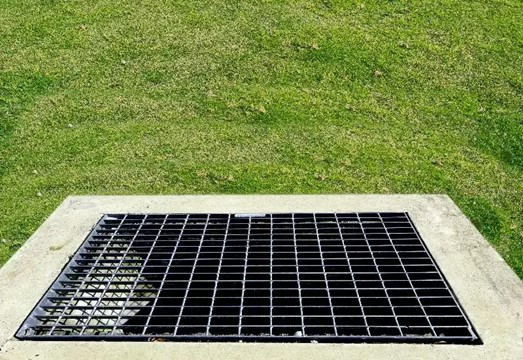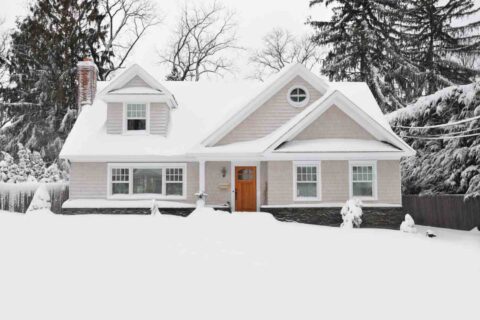What is a French Drainage System?

A Classic Drainage System
Dealing with excess water on your property can be a headache. Fortunately, a French drainage system is a simple yet effective solution that has been popular since the mid-19th century. These systems are effective and discreet, making them popular among homeowners. In this blog, we’ll go over what a French drainage system is, how it works, and how it can benefit your home so that you can make an informed decision when managing water issues.
Understanding the French Drainage System
So, what is a French drainage system? A French drainage system, often simply referred to as a French drain, is made of a trench that is filled with rock or gravel and contains a perforated pipe. This pipe guides water away from the area to avoid pooling. These systems are very useful for preventing water from damaging a building’s foundation or alleviating waterlogged soil in yards and gardens.
Components of a French Drain
- Trench: The trench is the most visible part of the French drain. It is dug to a specific depth and width to house the gravel or rock and the perforated pipe.
- Gravel or Rock: A layer of coarse gravel or rock is added to the trench. This layer helps direct the water flow toward the perforated pipe and filter out debris.
- Perforated Pipe: At the heart of the French drain is a perforated pipe. This pipe collects and redirects water. The pipe’s holes allow water to enter and direct it away from the problem area.
- Geotextile Fabric: Often, a geotextile fabric is used to line the trench. This fabric keeps out soil and dirt to stop the gravel pipe from becoming clogged, ensuring efficient water flow.
How a French Drain Works
The idea behind a French drain is straightforward. Water is naturally directed towards the path of least resistance. By providing a direct route for water to follow, a French drain collects water through the gravel and the perforated pipe, then channels it away from your home or low-lying areas. This process can be broken down into a few key steps:
- Water Collection: As water seeps into the ground, it encounters the gravel-filled trench. The coarse nature of the gravel allows water to flow freely through it.
- Water Entry: The perforated pipe within the trench is positioned in such a way that it can collect water efficiently. The small holes or perforations in the pipe allow water to enter from various points along the trench.
- Water Redirection: Once inside the pipe, the water is guided away from the problem area. The pipe usually slopes slightly to ensure gravity assists in moving the water to a designated drainage area, such as a dry well, a street gutter, or a storm drain.
Benefits of a French Drainage System
French drains offer many advantages, making them a popular solution for managing water issues around residential and commercial properties.
Effective Water Management
French drains are highly effective in redirecting water away from problem areas. Whether you have a soggy lawn, a flooded basement, or standing water near your foundation, a French drain can alleviate these issues by providing a clear path for water to follow.
Foundation Protection
One of the primary reasons homeowners install French drains is to protect their home’s foundation. When water pools around the foundation of a home, it can lead to shifting, cracks, and other structural issues. By directing water away from the foundation, a French drain helps maintain the integrity of your home.
Versatility
French drains can be used in numerous settings. They are suitable for residential properties, commercial buildings, and agricultural lands. They can also be installed in a variety of soil types and landscapes.
Low Maintenance
Once installed, French drains require minimal maintenance. Periodic checks to ensure the trench and pipe are not clogged with debris are usually sufficient to keep the system functioning efficiently. The use of geotextile fabric further reduces the likelihood of blockages.
Cost-Effective Solution
French drains are cost-effective compared to many other drainage solutions. The materials required (gravel, perforated pipe, geotextile fabric) are affordable, and the installation process is straightforward, often requiring less labor and time.
Installation Process
Homeowners with experience in construction or landscaping can often install their own French drains, but many homeowners choose to hire a professional to make sure the drain is installed properly and without hassle. Let’s take a look at the French drain installation process:
- Planning and Design: Identify the problem area and plan the path for the French drain. Consider the slope and the endpoint where the water will be redirected.
- Excavation: Dig a trench along the planned path. The trench should be deep and wide enough to accommodate the gravel and pipe.
- Lining the Trench: Lay the geotextile fabric in the trench, ensuring it covers the bottom and sides. This step helps prevent soil from clogging the system.
- Adding Gravel: Fill the bottom of the trench with a layer of gravel. This initial layer provides a stable base for the perforated pipe.
- Installing the Pipe: Place the perforated pipe on top of the gravel layer, ensuring the perforations face downward or sideways to collect water efficiently.
- Covering the Pipe: Add more gravel on top of the pipe, filling the trench to ground level or slightly below.
- Wrapping the Fabric: Fold the edges of the geotextile fabric over the topmost layer of gravel to protect the system from soil intrusion.
- Backfilling: Cover the trench with soil and sod or another desired surface material.
Install Your Next French Drains with Budget Basement Waterproofing
A French drainage system is an efficient solution for managing excess water around your property. Its versatility and cost-effectiveness make it popular among homeowners facing water-related issues. By understanding how a French drain works and why it’s so popular, you can decide whether this drainage system can meet your needs. Whether you’re dealing with a soggy lawn, a leaky basement, or foundation concerns, a French drain might just be the answer to keeping your property dry and secure. At Budget Basement Waterproofing, we take pride in providing exceptional solutions and prioritizing customer satisfaction. Join the many satisfied homeowners in Maryland who trust us to keep their property free of water issues. Contact us online or at 410-609-1240 today for a free estimate!

